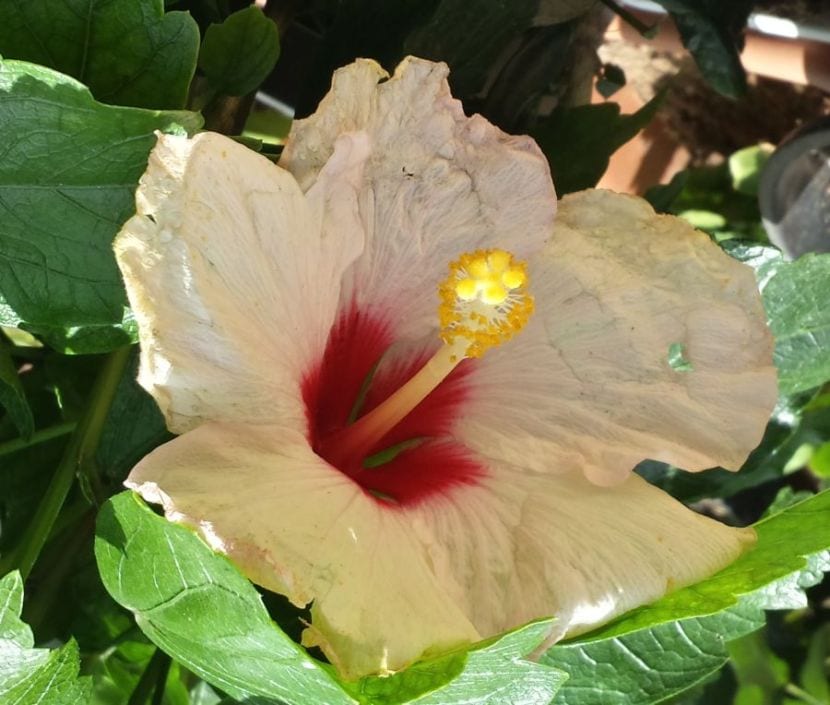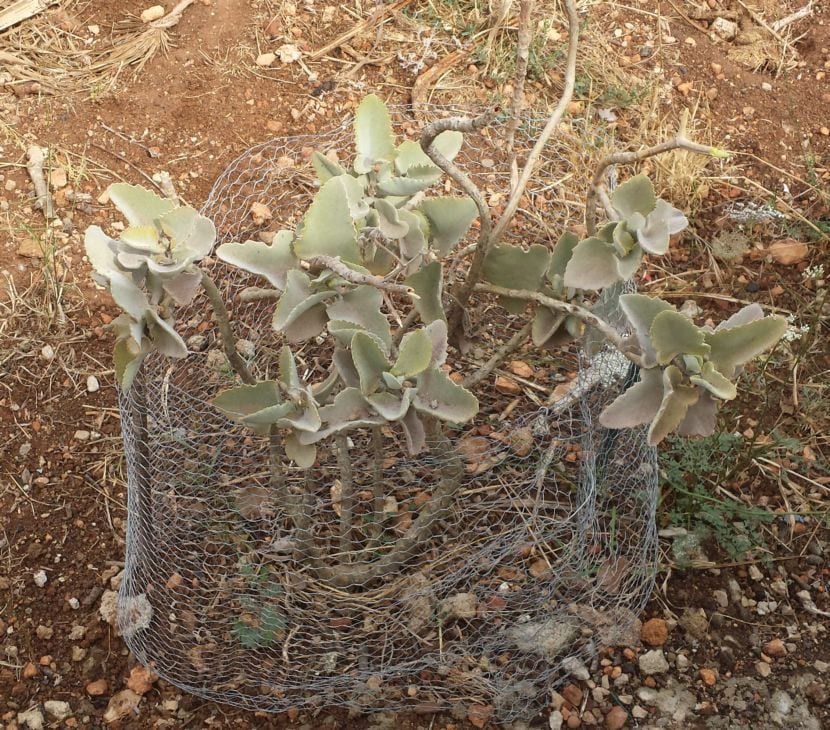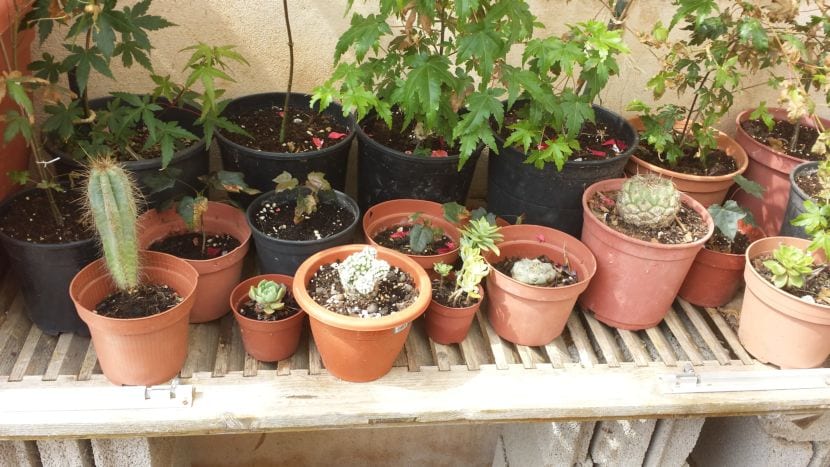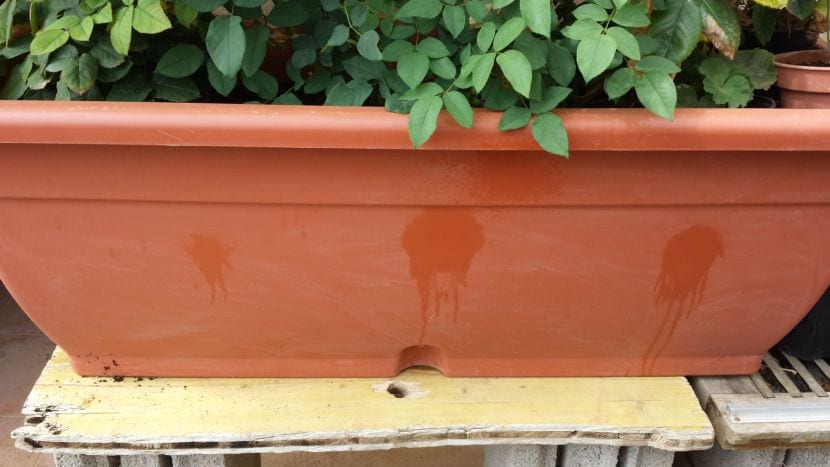
Today we will talk about an important topic for all those who live with pets, or who want to protect our plants thereof. We will tell you the different ways to scare them away, the most correct way to use repellants and how often you have to apply them to keep the plants in the garden or those in pots safe.
Both animals and plants can coexist in harmony, if you know how to choose the best method. Here are some tips to help you choose the one that is best for you.
Barriers

When we talk about barriers we mean to protect the plant with two (or more) guardians and a grid that is used to make chicken coops. Make sure it is at least 40cm tall. Thus, no animal can harm the plant, and it can grow without problems.

Another "barrier" could be the one seen in the photo. If you live with a dog that loves to jump, regardless of the height of the table and / or furniture, do not hesitate, put thorny plants like cacti »in the front row» and you will see how the problem is solved.
Repellents

There are three large groups of repellents: liquids, granules and natural ones.
- Liquids: are those that are applied in pots or surfaces (never on plants or animals). Ideal for their fast effectiveness. But they must be applied for several days in a row (usually five) until the problem has been solved. For safety, make sure it has dried before you leave.
- Granules: are those that are spread around the plants. Granules have also proven to be very effective, in addition, they last longer than liquids as they do not break down easily. It should be applied once or twice a week if the problem persists. The main drawback is its price, which is usually higher than that of liquid repellants.
- Natural: made from plants, they do not harm the environment. They are of a slower efficiency, that is to say, they work but more in the medium term. The advantage is that if the animal were to get too close, nothing would happen to it.
We can find a great variety of species that are natural repellers of animals. For instance: citronella, rue, rosemary, lavender, garlic, citrus like the lemon or orange tree ... If you don't want to take risks, try one of these plants (or several), putting them around the plants you want to protect, or using the essential oil diluted in water to spray the pots and / or logs .